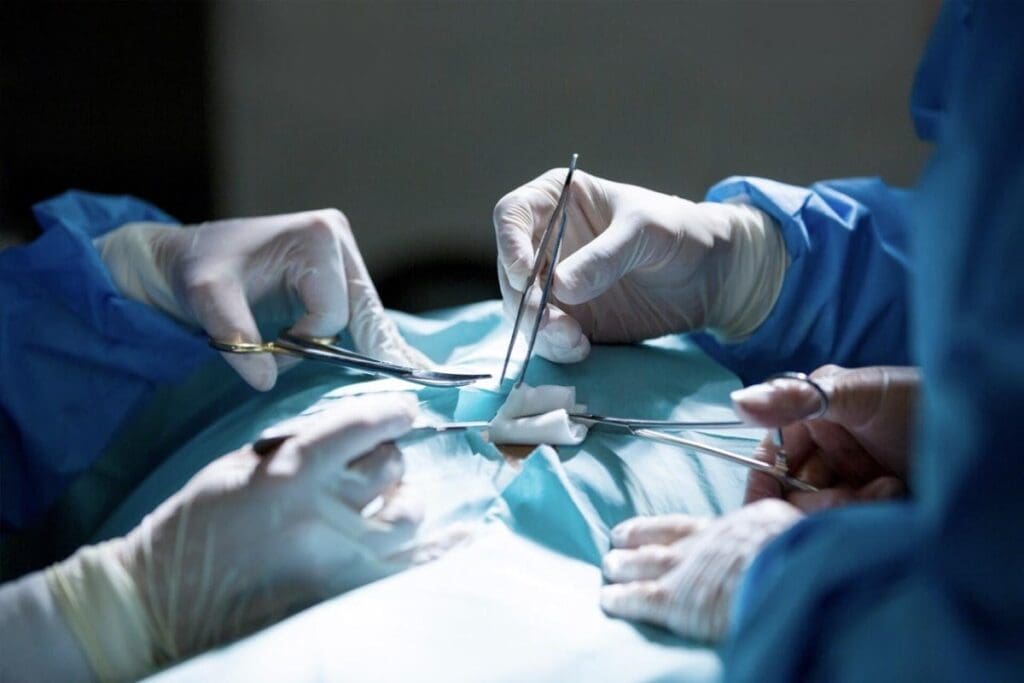Last Updated on November 24, 2025 by
We know that recovering from hernia surgery is a big worry for many. The good news is that new medical discoveries have cut down the recovery time a lot. Most people can go back to desk work and light activities in 1–3 days. They can start normal exercise again about 2 weeks later.

The time needed to rest after hernia surgery depends on your health and the surgery type. Usually, people can get back to their usual life in a few weeks. Some jobs, like those that involve heavy lifting, might need a longer break of 4 to 6 weeks.
The time it takes to recover from hernia surgery depends on the type. Knowing about recovery helps patients get ready for what comes next and manage their hopes.
The surgery method greatly affects recovery time. Laparoscopic hernia repair uses smaller cuts and less damage, leading to quicker healing. In contrast, open hernia repair needs a bigger cut and might take longer to heal.
Research shows that laparoscopic patients often face:
Open repair is sometimes needed for complex cases. It works well but usually means a longer recovery. It’s key for patients to talk with their surgeon to know what to expect.

Many things can affect how long it takes to recover from hernia surgery. These include:
Understanding these factors and the surgery type helps patients plan their recovery. This way, they can prepare for their post-surgery care.
The first week after hernia surgery is key to recovery. It’s important to manage pain and activity levels carefully. Patients should rest and follow their pain medication schedule to stay comfortable.
Managing pain is the main focus in the first days after surgery. Doctors usually give pain medication to help. Gentle walking is also recommended to prevent blood clots and improve blood flow. It’s essential to follow the healthcare provider’s instructions regarding pain management and activity levels.
As the first week goes on, patients can start doing more. They can do daily tasks, take short walks, and do light stretching. It’s important to listen to your body and not do too much, as it can cause problems.
Recommended activities for days 4-7 include:
By the end of the first week, most people feel a lot better. They have less pain and can move more easily. But it’s important to keep following your doctor’s advice to have a smooth recovery from hernia surgery.
After hernia surgery, people start to feel better in a few weeks. Knowing what to expect in weeks 1-4 helps plan your return to normal life. We’ll cover returning to work, driving, and doing household chores.
The time to go back to work varies based on your job and surgery type. Desk jobs might allow you to return in 1-2 weeks, if your job doesn’t require heavy lifting. Jobs that need manual labour might take 4-6 weeks or more.
Key considerations for returning to work:
You can drive once you’re off narcotic pain meds and can sit comfortably in a car. This is usually in 1-2 weeks. Short trips are okay in a few weeks, but long trips should wait until you’re fully healed.
Always follow your healthcare provider’s advice on driving and travel for your safety and others.
Most people can do light daily tasks by the end of the second week. But, avoid heavy lifting, bending, or hard work for 4-6 weeks. Slowly increase your activity to avoid problems and help your recovery.
Web sources say you can usually get back to normal activities in four to six weeks. Here’s a general guideline for household activities:
As you get better, listen to your body and adjust your activities. If you have any unusual symptoms or concerns, contact your healthcare provider.

Getting back to physical activity after hernia surgery needs a slow and careful plan. We know patients need help to safely boost their activity levels. This is to avoid any setbacks in their healing.
Weeks 2-4 after surgery, start with light activities like walking or stretching. These steps help blood flow and aid in healing. Always pay attention to your body and stop if you feel pain or discomfort.
Some good light exercises are:
By weeks 4-6, you can start doing more active things. This could be faster walking, light jogging, or swimming. But, stay away from heavy lifting, bending, or hard work that might harm the surgical area.
Examples of moderate activities are:
It’s best to avoid heavy lifting for at least six weeks after surgery. Heavy lifting can stress the surgical area too much. This could cause problems or make the hernia come back. Always check with your doctor for advice on lifting and safe ways to do it.
“It’s key to slowly and carefully start getting back to physical activities after hernia surgery. This helps avoid problems and ensures a good recovery.”
By sticking to these guidelines and talking to healthcare experts, patients can have a smooth and successful recovery from inguinal hernia surgery.
It’s important for patients to know about long-term recovery and possible complications after hernia surgery. Most people get better, but some face ongoing issues. Knowing what to expect is key.
3 months after surgery, most people can do many things they used to. But some might feel a bit of pain or discomfort.
At 6 months, most people can do strenuous activities again. It’s important to listen to your surgeon about lifting and bending.
By 12 months, most people are fully recovered. But recovery times can vary based on health and surgery type.
Some people, 10–15%, might deal with chronic minor pain. Chronic pain after hernia surgery can be treated with medicine, physical therapy, or sometimes more surgery.
Other possible long-term issues include:
Going to follow-up appointments and watching for complications is vital. Tell your doctor about any unusual symptoms or worries.
Understanding the long-term effects of recovery from hernia surgery and knowing the signs of complications helps patients on their recovery journey.
Recovering from hernia surgery needs patience and following the doctor’s orders. Knowing how long it takes to recover is key to a good outcome. Those who have laparoscopic hernia surgery usually heal faster than those with open surgery.
It’s important to stick to the doctor’s instructions and go to all follow-up visits. This helps avoid complications and ensures a smooth recovery from inguinal hernia surgery. Listening to the doctor and following instructions is critical for a successful recovery.
Understanding the recovery process helps manage pain and gradually get back to normal activities. We aim to provide top-notch healthcare and support to our patients. We guide them every step of the way during their recovery.
Recovery times vary, but most can go back to desk work in 1-3 days. The surgery type, like open or laparoscopic, affects how long it takes.
Laparoscopic surgery is quicker to recover from than open repair. It’s less invasive, causing less damage and trauma.
Age, health, and any complications all play a part in recovery time. Knowing these can help plan your recovery better.
Rest and manage pain well in the first days. Then, you can start doing more, like walking and doing daily tasks.
Going back to work depends on the surgery type and health. Most can start desk work in 1-3 days, but follow your doctor’s advice.
Start with light exercises in weeks 2-4. Then, move to more activity in weeks 4-6. Always follow a gradual plan to avoid issues.
Yes, avoid heavy lifting to prevent problems and ensure a good recovery.
Most recover well, but some may face long-term issues like chronic pain. Knowing what to expect and being aware of complications can help you seek help when needed.
Recovery times for inguinal hernia surgery vary. Most can get back to normal in a few weeks. Surgery type and health conditions affect recovery time.
The first week is key to a good recovery. Rest, manage pain, and slowly increase activity.
Subscribe to our e-newsletter to stay informed about the latest innovations in the world of health and exclusive offers!